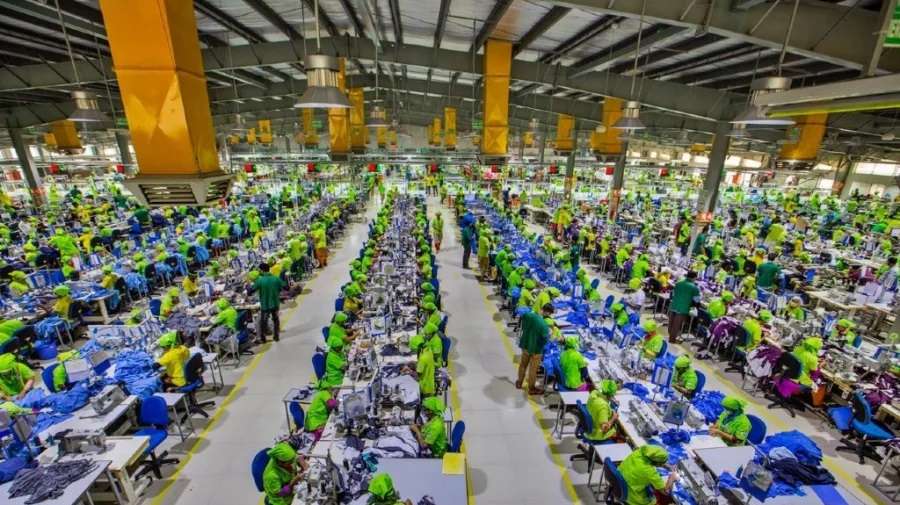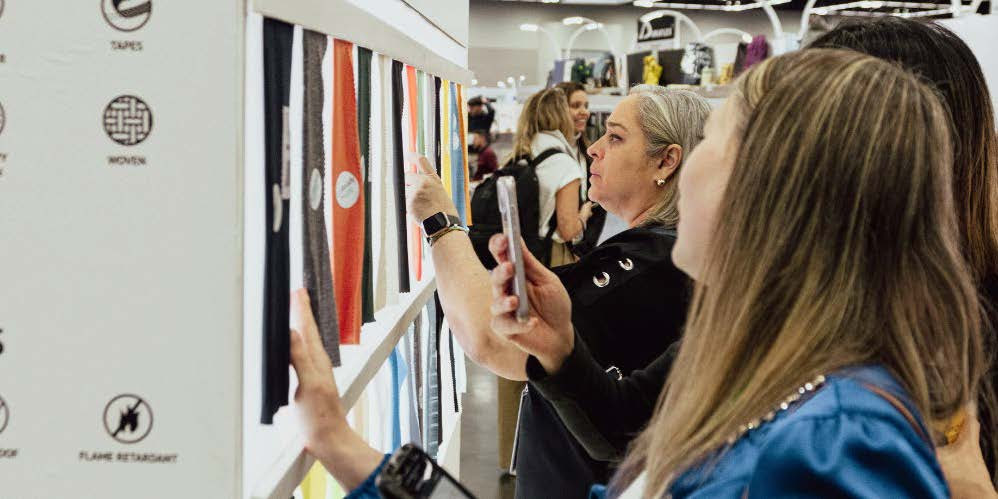
Cotton is expected to continue to lose market share in the ongoing season. Despite the loss of market share, world cotton consumption is rising in absolute terms.It appears that 2013-14 will be the fifth consecutive season in which cotton prices in China will be substantially above polyester prices in China. Falling mill use of cotton in China due to its cotton procurement policy is encouraging a significant shift in mill use to other countries.
World cotton production would be down 3.5 per cent from last season. The US will likely account for most of this decline, because US production will fall by 25 per cent. By contrast, production in China and Uzbekistan is projected to remain unchanged.
World cotton trade is forecast to decline by around a million tons
to less than nine million. This decline is almost entirely accounted for
by reduced imports into China. Shipments from all major exporters are
expected to fall, except from the CFA zone where producers are
increasing production this season, thus also exports, and in response
to higher cotton prices.
Estimates of mill use in India and Pakistan during 2011-12, 2012-13 and 2013-14 have been lowered.
The Turkey Cotton Association (IPUD) has set atarget of producing 13,000 tons of cotton for the 2013 harvest period under the standards of the Better Cotton Initiative (BCI) which will be launched this year in the country.The BCI aims to transform cotton production worldwide by developing Better Cotton as a sustainable mainstream commodity.In order to achieve this goal, the Aydin, Izmir, Bursa, Adana, Gaziantep, Mardin, Sanliurfa and Sirnak regions in the country have planned to cultivate about 8,000 hectares of land, with the help of seven organizations such as the IPUD, the National Cotton Council, Taris Cotton Association, the Sanko Textile and Apparel Exporters Association of Istanbul, Izmir Mercantile Exchange, Textile Employers’ Association of Turkey and Turkey Union of Chambers of Agriculture, who would work with around 310 cotton producers in the country.
Earlier in January, 2013, the BCI held a one-day multi-stakeholder workshop in Istanbul where 55 participants representing various cotton producers’ organizations, Turkish Government agencies, non-governmental organizations and intergovernmental agencies met and discussed implementing the ‘Better Cotton’ initiative in the country.
The workshop participants agreed that Turkish cotton quality is recognized for the efficiency of its production, but there are number of material sustainability challenges which BCI must focus on, which include water use and negative impacts of irrigated cotton; implementing threshold spraying (of pesticides); and, in southeastern provinces in particular, decent work for hired (seasonal) labor on cotton farms.
The participants also suggested that BCI should collaborate with a range of stakeholders, including public, private and third-sector (NGO) organizations, for the cultivation of Better Cotton in Turkey.
Preview in Seoul 2013held from September 4 to 6, 2013 at Hall B, in Samsung-dong, Seoul, Korea showcased new textile materials for the future growth engines, creating opportunities for discussions between business partners.
The exhibition focused on introducing various and differentiated functional and eco-friendly textiles, as well as patented materials. Many submitted products satisfied functionality, eco-friendliness, and reinforced fashion characteristics. Nearly 69 famous textile companies from 10 nations to enter in Korean market participated at the event.
Functional materials including moisture proof laminating materials, heat insulation, high-density thin fabrics, and UV blocking materials were augmented in this exhibition. The competitiveness of international participants was reinforced, too. Austria's Lenzingknown for its eco-friendly new materials, participated in the exhibition for three consecutive years. Everest, a Taiwanese company specialized for overall functional textiles, and Toyobo Japan, a leader in the development of new synthetic composite material, participated for the first time.
Nearly 41 Chinese textile companies including Jiangsu Hengli Chemical Fiber participated with an eye on the Korean market. Various companies from Turkey, Singapore, Taiwan, Indonesia, Uzbekistan, Pakistan, etc. showedcased their embroidery fabrics to outdoor functional materials, and demonstrated their price competitiveness as well the quality and technology.
The ‘Trend Forum Hall’ showing participants' various materials and the newest trends suggested buyers the possibilities in using various materials, and reinforced its index and visual functions through composing patent materials, collaboration (material company + designer), fashion products, and Small Order Zone. Small Order Zone was established for small quantity orders with low pricing to provide buyers opportunities to use various products.
In a symposium inviting fashion professional groups, PFIN offered 2014's SS Creative Trend Seminar to suggest the overall design directions for colours and fabrics in 2014's SS, while Fashion in Trend opened the five strategies to lead the outdoor fashion market with the agenda, the Challenge of Outdoor Fashion Companies.
Apart from luxury brands from the US and Europe, giant fashion groups, general import and export companies, garment makers and other important buyers from Japan, China, Taiwan and Hong Kong visited the exhibition. Studio Paglaiai visited PIS to import Korean high quality fashion material to the mid to high pricing market in Italy. Kusilas showed a great deal of interest in eco-friendly materials and embroideries.Hengyuan (Group) from China visited the expo to research the quality and the design competitiveness of Korean materials to launch its women's wear brand. Fazeya Group actively discussed with Korean material companies according to the policy to use Korean materials for their renewal plan of 200 or more shops.
About 6,000 Cambodian garment workers will return to work after their company agreed to withdraw a huge dismissal order for employees. After discussions with owners of the Singapore-owned SL Garment Processing Factory, workers will now return to work. But, despite the agreement, workers still have demands, including increased wages, improved working conditions and better health and safety standards.
The union says workers were being intimidated by armed military police who regularly inspect the factory. In July, a report from the International Labor Organisation said conditions for garment factory workers in Cambodia are declining. Inspection of 158 factories revealed that areas where things could be improved are: child labor, fire safety and workers' health.
The death of two factory workers in Cambodia in May raised the pressure to improve the record. The garment industry provides 6,50,000 jobs in Cambodia but safety needs to be improved. Since the country's elections in July, the government is investing more time into issues like workers’ conditions. It has agreed to help set up a committee for increased salaries.
For the quarter ended June 30, 2013, Trident’s yarn segment revenues climbed 18 per cent. Higher realizations consequent to improved contribution from value-added products like mélange yarn enabled topline growth. This was despite a marginal increase in sales volumes. PBIT margins improved from 6.2 per cent to 16.8 per cent driven by cost optimization measures along with improving realizations resultant to enhanced product mix towards value-added products.
In terry towel lower sales volumes moderated topline performance -- partly mitigated by improved realizations on account of higher sale of value-added products. Despite lower sales volumes, profitability was flat given various cost rationalization initiatives combined with a change in the product mix towards value-added products.
Trident, the flagship company of the Trident Group, is a leading manufacturer and exporter of textiles and paper products. The group is broadening its reach and strengthening its partnership with suppliers and customers.
Import of textiles and apparels by the United States has increased by 3.11 per cent year-on-year during the first seven months of 2013.Apparel import was up 3.59 per cent year-on-year while non-apparel was up 1.63 per cent year-on-year.
Vietnam’s textile exports to the US jumped 13.48 per cent year-on-year during the seven-month period whereas US imports from Bangladesh increased 9.06 per cent year-on-year. China continued to be the top supplier of textiles to the US with its exports registering a rise of 1.82 per cent year-on-year.
India and Indonesia were the other countries among the top five textile exporters to the US during the period under review. US imports of textiles from India showed an increase of 4 per cent year-on-year. US textile imports from Indonesia grew 3.57 per cent year-on-year during the same period.
US textile imports from EU-28 countries rose 4.73 per cent year-on-year while imports from NAFTA fell 1.53 per cent year-on-year during January to July 2013.
British fashion retailer AllSaints has opened its first standalone store in Amsterdam, the Netherlands as it looks to expand its presence in the Dutch market...Read More
 Across the country, British high street retailers have begun with their seasonal recruitment. Large retailers such as Matalan, Argos and John Lewis will all take on extra temporary staff to help cope with their predicted seasonal push. However, some retailers appear to be on edge of caution with the number of seasonal employees they plan to hire, less than optimistic for this years’ holiday season than the previous year...Read More
Across the country, British high street retailers have begun with their seasonal recruitment. Large retailers such as Matalan, Argos and John Lewis will all take on extra temporary staff to help cope with their predicted seasonal push. However, some retailers appear to be on edge of caution with the number of seasonal employees they plan to hire, less than optimistic for this years’ holiday season than the previous year...Read More
 There are many rumours circulating from Paris Fashion Week regarding Marc Jacobs leaving Louis Vuitton and who his possible successor could be. Last week it emerged that the designer, who has helmed the label since 1997, would not be renewing his 10-year contract when it expires next month...Read More
There are many rumours circulating from Paris Fashion Week regarding Marc Jacobs leaving Louis Vuitton and who his possible successor could be. Last week it emerged that the designer, who has helmed the label since 1997, would not be renewing his 10-year contract when it expires next month...Read More
The FTSE 100 edged lower in the London Stock Exchange, dropping 2.21 points to 6,460.01, dragging down the small cap exchange AIM as well. Asos lost 21 pence to 5,120 pence, with analysts at Panmure Gordon leaving the e-tailer out of their quarterly top picks...Read More













